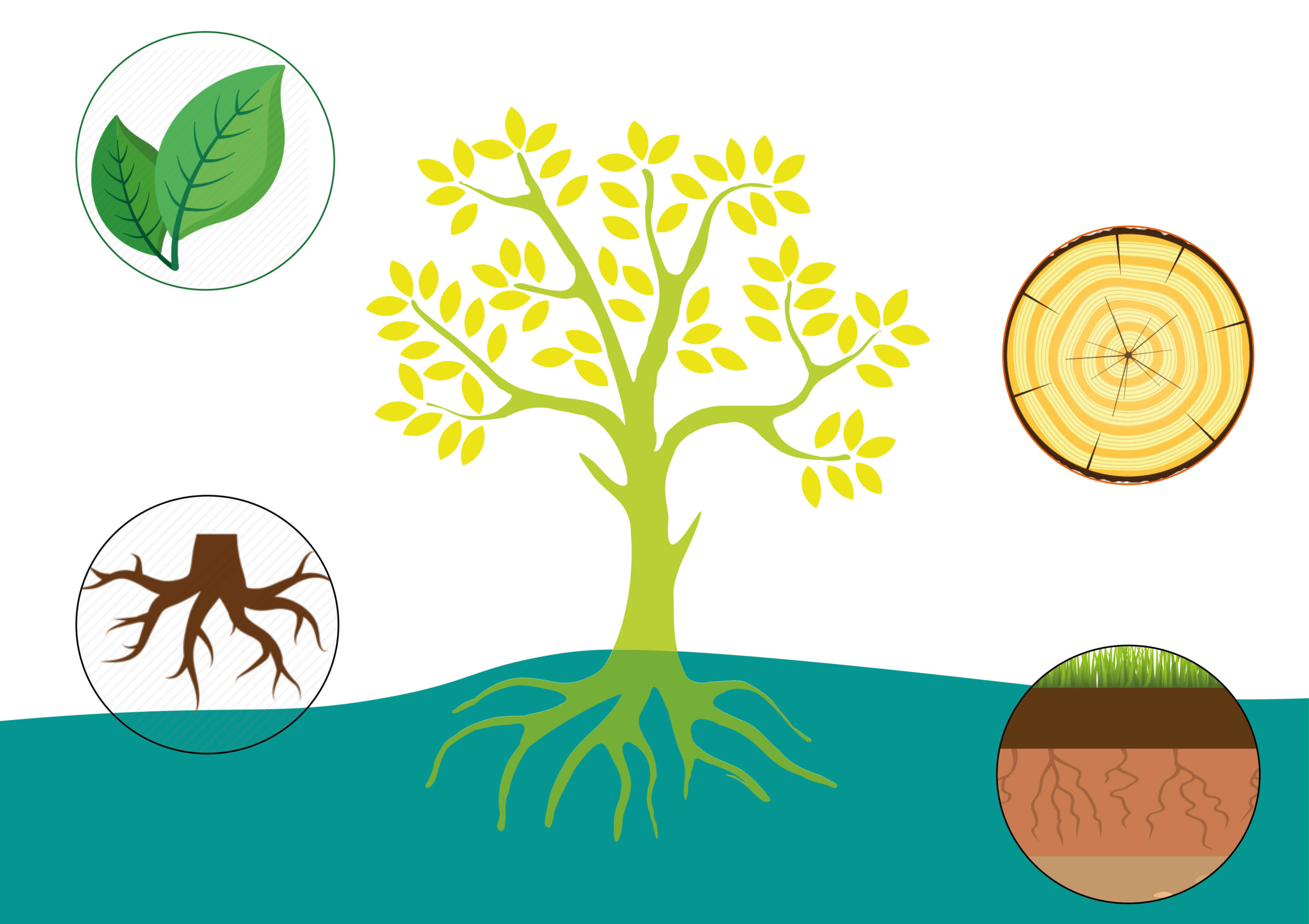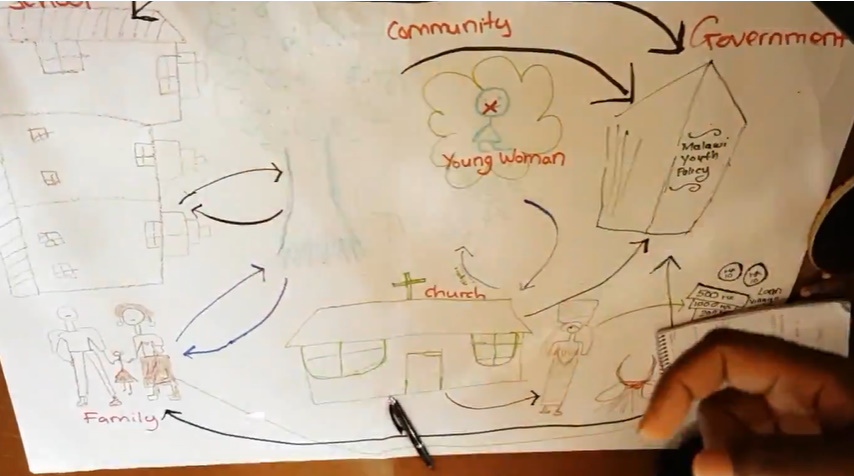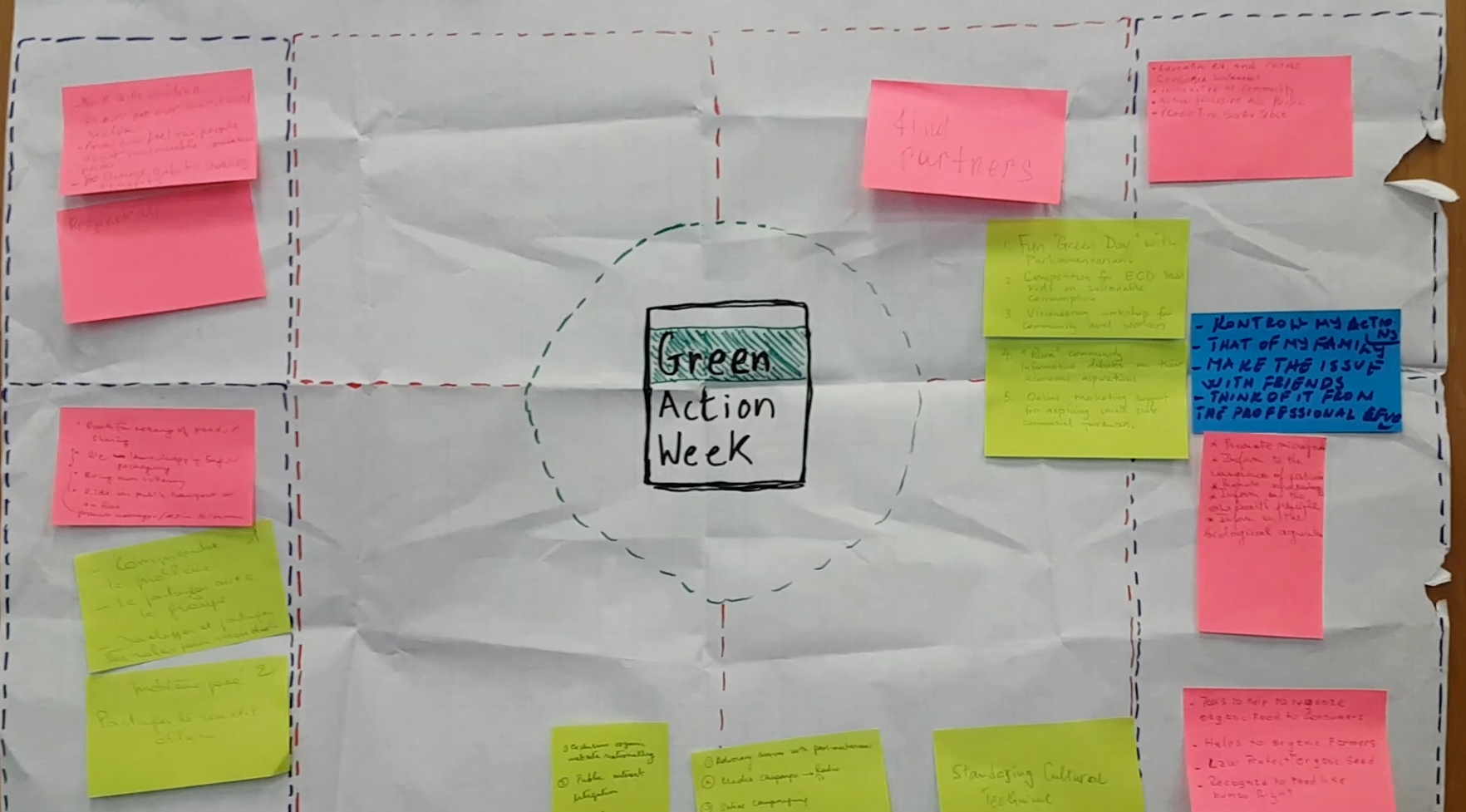5-steps to a Sharing Community campaign
1. Find our vision
Explain what will be different in our community if we are successful.
Can we do it in under 40 words?
- How will you know if you're not needed anymore?
- Don't just imagine a perfect society from above - can you imagine what it looks like in the life of a single person?
- Does this tackle the joint crisis of people and planet?

2. Understand the obstacles
What obstacles are preventing our vision from happening? What are the real causes of these obstacles?
- If our obstacles are mostly 'symptoms' or 'patterns', what could be the 'roots' or 'culture' underneath them?
- If our obstacles are mostly 'roots' or 'culture', can we identify the 'patterns' or 'symptoms' that come from them - to make them feel more real?
- If this obstacle was solved, would our vision be much more likely to come true?


Symptoms: What can you touch, feel, or see that is caused by the problem?
Example: Empty fuel cannisters are littered everywhere – and people are spending a lot of money on fuel.

Patterns: How has this changed over time? What has changed with it?
Example: The fuel prices and litter went up, more people moving into the area.

Roots: What in society, politics, the economy, or our behaviour is causing the pattern?
Example: Government subsidises fuel but not public transport. People need to commute a long way to their jobs.

Culture: What beliefs or assumptions make up the environment for these roots to grow?
Example: “You should take pride in owning your own vehicle”.
“You are responsible for yourself.”
3. Decide our solutions and audiences
What solutions could tackle the obstacles we identified? Who do we need to reach to make them happen?
- Are our solutions big enough to match the obstacle?
- Are we just naming categories of audiences (like 'decision makers') or can we go deeper?
- Are we just choosing audiences we are already comfortable with - or do we need to look at different audiences?

4. Plan our activities
What will we actually do to make a sharing community happen?
- Are we just listing activities we have done before, or which are easy to do?
- Have we thought about who else (partners, allies, spokespeople, etc) we will need to carry this out?
- Are we staying true to our vision, obstacles, and solutions?


If you would prefer to download and go through these steps yourself offline, we have created downloadable resources:
- A facilitator’s guide to help you and your group think through your vision, obstacles, solution, and activities – with suggested exercises. Download here.
- Presentation slides with a video, examples and diagrams to accompany the facilitator’s guide. Download here.
- A planning poster with tips which will help you create a large visual guide of your vision, obstacles, solution and activites which you can put on your wall and helps the whole team stay focused. Download here.
5. Get help to finalise plans
Green Action Week participants fed back that you appreciated one-to-one communications support, and you would like even more support before the planning submission deadline.
- We will have a group webinar where we can go through the planning process together, you can hear more examples of great Sharing Community campaign activities, and we can answer any questions. Members of Consumers International and partners of SSNC will receive the times and link by email.
- You can book a 30-min call (over Skype, WhatsApp, or another video call software) to get one-to-one support on your plans. Members of Consumers International and partners of SSNC will receive the booking link by email.
What should I watch out for?
Previous participants have fed back that it is sometimes hard to understand what is a sharing community campaign – and what isn’t. Below are some tips that hopefully make it clearer how to make your planning application stronger.
Awareness must link to action
‘Sharing knowledge or skills’ through trainings or awareness campaigns is not, by itself, relevant to our theme. We must go further to use that knowledge or skills to actually change behaviour or systems through sharing and collaboration of goods and/or services.
- Projects with sharing/collaboration of goods and/or services.
- Projects that only involve 'sharing knowledge/skills'.
Community, not charity
‘Sharing what you have with those who need it’ should not just be a one-off act of giving charity from rich to poor, but should be an exchange between people. So everyone has better access to goods and services in a way that is environmentally sustainable.
- Activities where everyone can contribute in some way.
- Activities where some people only give and others only receive.
Sharing Community is the method as well as the objective
‘Sharing ideas’ about activities like organic farming, by itself, is not relevant enough to this theme. Our campaigns need to use sharing and collaboration of goods and services as the method of the activities – it is the best way to prove that the sharing community can work.
- Campaigns that prove sharing community works - by doing it.
- Campaigns which only talk about an idea of sharing community.